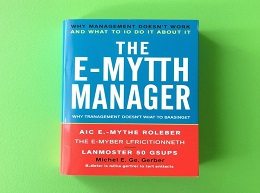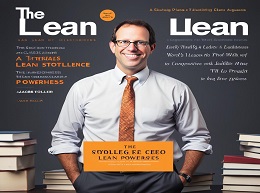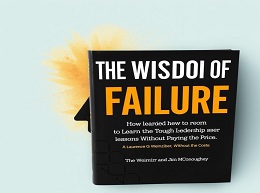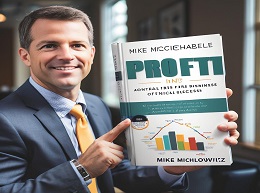Seeing What Others Don't: The Remarkable Ways We Gain Insights
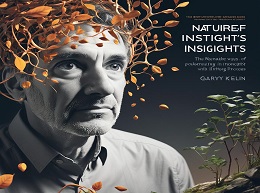
Unveiling Insights: A Deep Dive into "Seeing What Others Don't"
Gary Klein’s book, "Seeing What Others Don’t: The Remarkable Ways We Gain Insights," is a profound exploration of the cognitive processes that lead to insights. Klein, a renowned cognitive psychologist, delves into the nature of insights, how they emerge, and why they are essential for innovation and problem-solving. This review will examine the core concepts of the book, highlighting key examples and practical applications that illustrate how we can harness the power of insights in various aspects of life.
About the Author
Gary Klein is a prominent figure in the field of cognitive psychology, known for his work on decision-making and problem-solving. His research has significantly contributed to understanding how people think and make decisions in complex, real-world situations. Klein’s expertise and deep understanding of cognitive processes provide a solid foundation for the insights shared in this book.
Defining Insights
Klein defines insights as unexpected shifts in the way we understand, perceive, or interpret something. These shifts can transform our understanding and lead to new ways of thinking and problem-solving. Unlike incremental learning, insights often occur suddenly and can have a profound impact on our perspectives and actions.
Example: The Stethoscope
One of the examples Klein uses to illustrate the power of insights is the invention of the stethoscope by René Laennec. Before the stethoscope, doctors would place their ears directly on a patient's chest to listen to heartbeats. Laennec’s insight to use a rolled-up piece of paper to amplify the sound led to the creation of the stethoscope, revolutionizing medical diagnostics.
The Three Paths to Insights
Klein categorizes insights into three primary paths: Contradictions, Connections, and Creative Desperation. Each path offers a unique way insights can emerge, and understanding these can help individuals and organizations foster an environment conducive to generating insights.
Contradictions
Insights often arise when we encounter contradictions that challenge our current understanding or beliefs. Recognizing and resolving these contradictions can lead to significant breakthroughs.
Example: The Wright Brothers
The Wright brothers, Orville and Wilbur, encountered a major contradiction in their quest to build a flying machine. Conventional wisdom at the time held that wings needed to be flat to generate lift. However, through experimentation and observation, they discovered that curved wings were more effective, leading to their successful flight in 1903. This insight contradicted existing beliefs and paved the way for modern aviation.
Connections
Another path to insights is making connections between seemingly unrelated pieces of information. By linking disparate ideas, we can generate new understandings and solutions.
Example: Velcro
The invention of Velcro by George de Mestral is a classic example of generating insights through connections. After a hike, de Mestral noticed burrs stuck to his clothes and his dog’s fur. Examining them under a microscope, he saw the tiny hooks that allowed them to cling to fabric. This observation led to the idea of creating a fastening system based on the same principle, resulting in Velcro, now widely used in various applications.
Creative Desperation
Creative desperation occurs when individuals or organizations face a crisis or significant pressure, forcing them to think outside the box and find innovative solutions.
Example: Apollo 13
The Apollo 13 mission faced a life-threatening crisis when an oxygen tank exploded. The ground team at NASA, under immense pressure, had to come up with an immediate solution to bring the astronauts back safely. Their insight to use the lunar module as a lifeboat, and creatively repurpose available materials to create a carbon dioxide filter, exemplifies how creative desperation can lead to life-saving innovations.
Preparation and Immersion
Klein emphasizes the importance of preparation and immersion in the subject matter as a precursor to gaining insights. Deep understanding and familiarity with a problem or domain can prime the mind for recognizing patterns and making connections.
Example: Alexander Fleming
Alexander Fleming’s discovery of penicillin is a testament to the importance of preparation and immersion. Fleming’s extensive background in bacteriology allowed him to recognize the significance of the mold’s antibacterial properties when he accidentally observed it killing bacteria in a petri dish. His preparation enabled him to see what others might have overlooked.
Reflection and Incubation
Reflection and incubation are critical stages in the insight process. Taking a step back and allowing the subconscious mind to process information can lead to sudden, breakthrough insights.
Example: Archimedes and the Bathtub
The famous story of Archimedes’ insight while taking a bath illustrates the power of reflection and incubation. Struggling to determine whether a crown was made of pure gold, he had his eureka moment when he noticed the water displacement caused by his body. This observation led to the principle of buoyancy and a method to measure the crown’s composition.
Eureka Moments
Eureka moments are the sudden realizations or flashes of understanding that often characterize insights. These moments can be spontaneous, resulting from the interplay of preparation, reflection, and unconscious processing.
Example: The Double Helix
James Watson and Francis Crick’s discovery of the double-helix structure of DNA is a famous eureka moment in science. After months of research and model-building, the critical insight came when Watson saw a representation of the helical structure, leading to the groundbreaking realization of how genetic information is stored and transmitted.
Fostering an Insight-Friendly Environment
Klein provides practical advice on how individuals and organizations can create environments that foster insights. Encouraging curiosity, allowing time for reflection, and promoting open communication are key factors.
Example: Google’s 20% Time
Google’s policy of allowing employees to spend 20% of their time on projects of their choosing is a practical implementation of fostering an insight-friendly environment. This freedom has led to significant innovations, including the development of Gmail and Google Maps.
Embracing Failure and Learning
Learning from failures and setbacks is crucial for gaining insights. Rather than viewing failures as negative outcomes, they should be seen as opportunities for learning and growth.
Example: Thomas Edison
Thomas Edison’s numerous experiments and failures in developing the electric light bulb exemplify the importance of embracing failure. Edison’s iterative process and relentless pursuit of a working solution led to the invention of a practical and enduring light bulb, demonstrating that insights often emerge from the lessons learned through failure.
"Seeing What Others Don’t: The Remarkable Ways We Gain Insights" by Gary Klein is a thought-provoking exploration of how insights are generated and why they are vital for innovation and problem-solving. Klein’s categorization of insights into Contradictions, Connections, and Creative Desperation provides a comprehensive framework for understanding the diverse ways insights can emerge.
Through engaging examples, such as the invention of the stethoscope, the Wright brothers’ pioneering work, and the Apollo 13 mission, Klein illustrates the power of insights to transform understanding and drive significant advancements. His emphasis on preparation, reflection, and the willingness to embrace failure offers practical guidance for individuals and organizations seeking to cultivate an environment conducive to generating insights.
Whether you are an entrepreneur, a scientist, a business leader, or simply someone curious about the nature of human cognition, "Seeing What Others Don’t" offers valuable lessons on how to unlock the remarkable potential of insights. By understanding and applying the principles outlined in this book, you can enhance your ability to see what others don’t and turn those insights into meaningful innovations.
